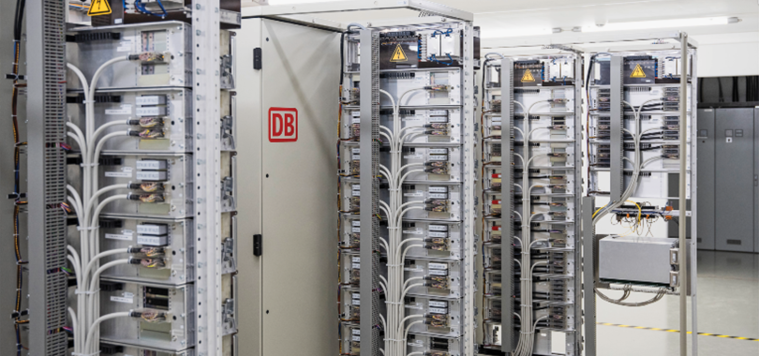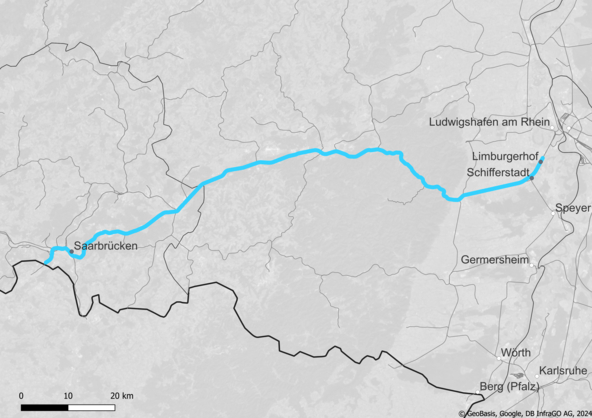
POS Nord
As part of the Paris – Budapest European Main Line, France and Germany agreed in 1992 to upgrade the line between Paris – eastern France – south-west Germany (POS) – divided into a northern and a southern branch. ETCS will be installed on the northern branch from Saarbrücken to Ludwigshafen (POS Nord) by 2029. To this end, the relay interlockings in Landstuhl, Kaiserslautern and Hochspeyer will be replaced by modern interlockings from 2025.
Project duration
Route data
| Strecke von | Saarbrücken border |
|---|---|
| Strecke bis | Limburgerhof junction |
| Auszurüstende Streckenkilometer | ca. 128 km |
| Streckennummer(n) | 3250, 3280, 3401 |
Planned actions
| ETCS | Level 2 with signals |
|---|---|
| Stellwerk(e) | 3 ESTW |
| Austüstungsumfang |
|
| Geplante Geschwindigkeit | 200 km/h |
Technologies
Contact
Disclaimer
The dates shown are legally non-binding forecasts based on the current status. The forecasts are in no way intended to establish any kind of legal claim whatsoever that completion will take place by the specified date and that use will be possible. For these reasons, the information should also not be used to make or prepare business decisions, for example, but not conclusively, with regard to the vehicle equipment or the compatibility between the vehicles and the infrastructure. If you have any questions, particularly regarding technical network access or obtaining binding information, please contact your customer advisor.
Most of the infrastructure projects are still in the planning phase, which means that the information provided on these pages reflects the current planning status and is updated regularly.
The Saarbrücken – Ludwigshafen route is an important East-West Corridor and, as part of the Atlantic Corridor, is part of the Trans-European Transport Network (TEN-T). The Atlantic corridor connects important European economic centres and conurbations in Spain, France and south-west Germany. The Rhine-Danube TEN corridor runs eastwards from Strasbourg and Mannheim.
The "Mail Line for Europe" along the Paris – Budapest rail axis was founded in 1990 as an overarching initiative with the aim of modernising the route quickly. The expansion into a high-performance connection is intended to contribute to the economic, political and cultural integration of Eastern and Western Europe, among other things.
Against this background, France and Germany agreed in 1992 in an international treaty to upgrade the line on the Paris – Eastern France – Southwest Germany (POS for short) route in order to realise an efficient cross-border connection for passenger and freight transport. A distinction was made between a "northern branch" via Saarbrücken and Ludwigshafen (POS North) and a "southern branch" via Strasbourg, Kehl and Appenweier (POS South).
Requirements plan project
The line upgrade on the German part of the POS North was completed in 2019. The installation of the Level 2 European Train Control System with signals (ETCS L2mS) will follow by 2029. Speeds of up to 200 km/h will then be possible on sections of the route. As a prerequisite for ETCS, the existing relay interlocking (RSTW) in Landstuhl, Kaiserslautern and Hochspeyer will each be replaced by a modern interlocking from 2025.
The necessary construction work will be carried out during ongoing railway operations.
Bauende Bahn
This is a Deutsche Bahn project. We are building. So that people can build on us again. More information about the Bauende Bahn can be found here (in German only).
